






Shelburne residents Peter Kim and Mark Sienko are bringing the community together through the love of one thing: soccer.
Through their program Soccer Roots, the duo is looking to bring the sport, which has taken both of them around the globe, back to the local level in a way that is accessible to everyone and anyone looking to join in on the fun.
More specifically, the program seeks to remove the typical “pay-to-play” model barriers that often exist when playing a sport in the United States.
“Both Mark and I have been around
the world quite a bit and kind of come to some realizations about the way soccer is done here in the United States, the development pathway, and the pay-to-play model as it is,” said Kim, turning on the lights in Shelburne’s fieldhouse, where most of the soccer magic happens. “We both realize that soccer, everywhere else in the world is local first and it is a source of community, and the community is a source of player development.”
Kim, who is also the soccer coach for the Middlebury College women’s team, recounted the times throughout his life when
See SOCCER on page 16
The Shelburne Museum is hosting an exhibition showcasing the artwork of Hinesburg Community School students enrolled in a new after-school program that combines visual art education with mathematical reasoning.
The exhibit, which will be on display May 17-19, serves as a capstone for kindergarten and first grade students who have been participating in the Leslie and Olivia Art + Math Afterschool Program throughout the spring semester.
“In this day and age, anything we can do to encourage and engender creativity

in young people is something we want to support,” Thomas Denenberg, director of the Shelburne Museum, said. “It’s part of the mission of the museum, and it’s something that I think is critical in society.”
The after-school program integrates basic mathematical concepts like spatial reasoning and simple geometry into art lessons that help kids develop their creative and analytic skills in tandem. According to promotional materials for the exhibition, the curriculum for the program was developed by the nonprofit Olivia & Leslie Foundation in conjunction with the museum and
See ARTWORK on page 3

Ethan Tapper hopped out of his truck and pointed his binoculars to the sky, scanning the tops of the trees on his 175-acre property in Bolton.
“I’m not a birder, but I love birds,” he said, a smile spreading across his face as he watched a black-throated blue warbler bounce from branch to branch.
“This year I really started to focus on them because they tell you a lot about the forest,” he said, mimicking the chirps of different bird species flying around him. “They all use different types of habitats, different species of trees, different ages of trees, different structures, like dead standing trees, and big trees. It’s not just birdsong. It’s all these different species that are all really different.”
Other than knowing how to identify just about every bird that crosses his property by the sound of its call, Tapper is a master at reading forests altogether, a mastery he cultivated in the eight years he spent as Chittenden County’s forester.
But that chapter in his life has ended this month as he moves onto a different, yet familiar path that began on his property, which he calls Bear Island.
The expansive acreage has been his since 2017 and was purchased for a bargain price of $150,000. But this wasn’t technically a stroke of good luck, he said, since the forests inhabiting the property had about every issue a forest could have. The long and sometimes tedious process of tending the land has also been the basis of his new book, “How to Love a Forest: The Bittersweet Work of Tending a Changing World,” set for release Sept. 10.
The property, he said, has been a massive learning experience that has taught him about some of life’s biggest and greatest lessons: death, love and how acts of compassion can look very different than what we think they should look like.
“A lot of people have this idea that to love a forest means to leave it alone because how could cutting a tree ever be something that’s positive for any ecosystem? But when I happened upon this forest, I was like, ‘This needs help,’” he said. “I can’t help it just by leaving it alone. That started this whole journey of, ‘OK, what does it mean to love a forest? What does it mean to care for this place?’”
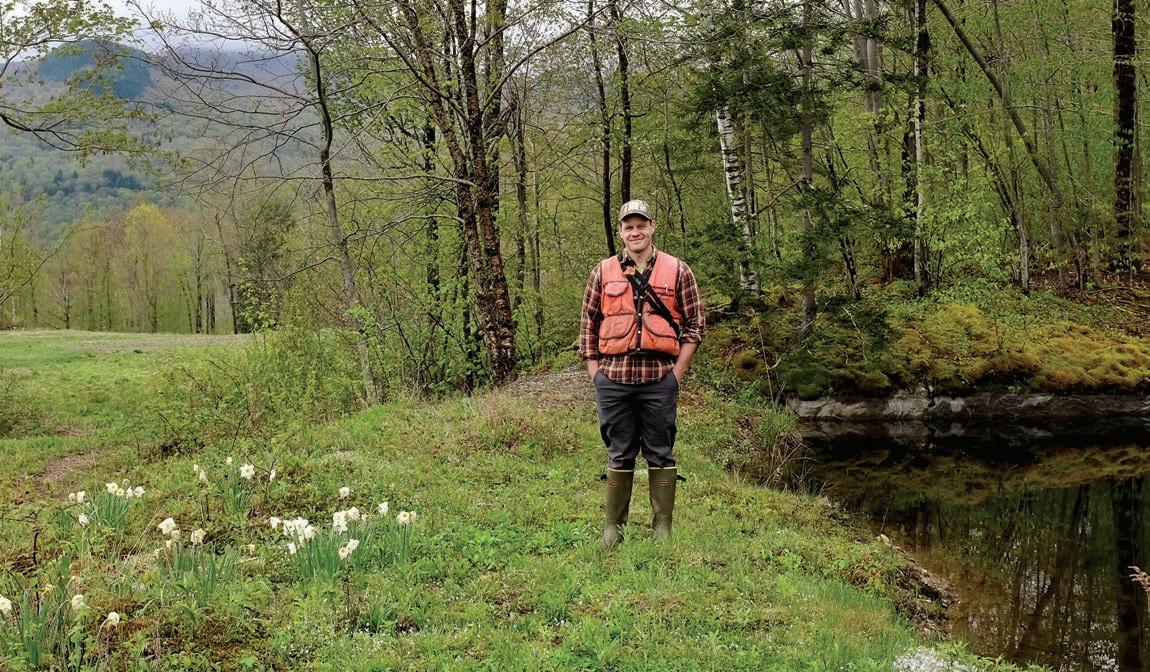 PHOTO BY LIBERTY DARR
PHOTO BY LIBERTY DARR
An idyllic view of Camels Hump can be seen from almost every vantage point on the property, and it’s likely that on an early 8 a.m. hike, the iconic peak will be covered in billowing clouds and a soft, misty fog. It’s the perfect time of year to catch the first waves of “spring foliage,” he said, trudging up one particularly never-ending steep hill tucked deep inside the property’s boundaries.
“It’s way more subtle than autumn foliage,” he said, taking meditative steps that resembled a thankful prayer. “The maple leaves are red, and the sugar maple flowers are bright green, and the aspens are all white. This is one of the things about managing an ecosystem, there’s just so much here. It’s such a profound responsibility, and humbling experience to try and care for this.”
Pointing to different forest markers along the way, he brought his focus back to the hill.
“In the book, I walk up the hill and I say,

‘I wonder how many times in my life. I will walk up this damn hill.’”
But the hill itself is representative of the struggles it took to get the land where it is today, the internal battles he had to face to shape the forest to maximum health, and the countless hours it took to complete the more than 200-page book. The work mirrors largely his work as a forester, creating management plans for countless forests while educating people about what it means to care radically for a forest. In a lot of ways, trees are like humans, he said, but in even more ways, they are not.
“There’s also a lot of discourse in books and in media about forests as these utopian, perfect societies, which is really not how they work at all,” he said. “They’re incredibly dynamic and imperfect and that’s what makes them so amazing. People anthropomorphize trees, but if they are like humans, it’s because they’re imperfect, they’re in process.”
The concept has led him to grapple with death in a unique way. Through the lens of forest management, the same tools meant for destruction can oftentimes be used to bring about an entirely new abundance. In other words, the death of some trees is sometimes necessary for the rejuvenation of an entire forest — a bittersweet concept he recognizes as a radical act of compassion.
“I also can’t tell you that it’s a good thing. It’s not a good thing. It’s a thing that can be good or bad,” he said, noting for example that much of his land was destroyed 30 years ago due to logging. “It can degrade forests, but it can also be a tool of healing. The difference between those is just a lot of nuances.”
Tree mortality plays an equally import-
ant role in forest maintenance as nurturing new growth, he said.
“If we think about trees like people, then the death of a tree is like the death of a person and you have to avoid it at all costs,” he said. “But if we think about forests more holistically, you see that tree mortality is one of the most foundational parts of the system.”
While the book explores these larger themes, it also feels like a personal memoir, he said, mostly because the work he does every day is very personal. For the past five years, when he wasn’t working 10-hour days as a county forester and spending the weekends working even longer hours tending to Bear Island, he spent the first hours of his morning chipping away at pages.
As Tapper guides his readers through the intricate world of wolf trees, spring ephemerals and the mysterious creatures of the rhizosphere and the necrosphere, he’s also giving a glimpse into his own personal life.
“First, let me show you how much I love this forest and every forest and then hopefully you’ll trust me when I show you this incredibly confusing concept,” he said.
As he embarks on this new adventure, he won’t be abandoning his forestry roots altogether. For now, he plans to pursue his own private forestry consulting firm, Bear Island Forestry, to continue bringing his knowledge in the field to more Vermonters. And, of course, he will continue most of his days up on his property where most of this story began.
“It’s been such a process, all of this,” he said. “Working on the book and working up here on Bear Island, those journeys have really paralleled each other. I didn’t know how to write a book any more than I knew how to run a skidder or an excavator. I had a lot of frustrating moments, but I refused to give up.”

Technology, Engineering, Arts and Mathematics-based
continued from page 1
the Princeton, N.J., based EdTech firm Maker Prep.
“A fundamental part of our program is not only to fund and enable to skill development around art and math but also to engender that moment of pride between child and parent and to celebrate creativity,” said Chris Kuenne, founder of the Olivia & Leslie Foundation, in an interview.
initiative has been a hit in both communities, and the two schools
“Being able to have the children’s art hung in a museum is kind of like the ultimate form of recognition for their creativity.”
tion is also planning to make the curriculum more widely available, and he hopes the program will eventually be available to even more students in coming years.
— Chris Kuenne, founder of the Olivia & Leslie Foundation
hope to continue offering the program to students during the fall and spring semesters next year. He said that the founda-
“That magic of creativity and then the celebration of creativity is why we teamed up with the Shelburne Museum,” Kuenne said. “Being able to have the children’s art hung in a museum is kind of like the ultimate form of recognition for their creativity.”
An entrepreneur and Shelburne trustee of the Shelburne Museum, Kuenne started the foundation to memorialize his daughter, Olivia, and wife, Leslie, with the hopes of fostering creativity in young students while teaching them with the foundations of mathematics and problem solving.
After successfully running a pilot program for the curriculum last year, the foundation partnered with the Hinesburg Community School and the Johnson Park School in Princeton, N.J., both of which have hosted the afterschool program during the ongoing spring semester.
According to Kuenne, the
“We probably need another year or so to pin down the details for how to put this in a form where it could be scaled up, but our dream is to scale this up across Vermont and New Jersey,” Kuenne said.






Total reported incidents: 62
Traffic stops: 4
Warnings: 3
Tickets: 1
Arrests: 0
Medical emergencies: 22
Mental health incidents: 0
Suspicious incidents: 7
Directed patrols: 24
Citizen assists: 8
Motor vehicle complaints: 1
Car crash: 1
Animal problem: 1
Noise disturbance: 1
Unlawful Mischief: 0
Theft: 5
Harassment: 0
Vandalism: 0
Fraud: 0
Alarms: 7
Pending investigations: 4
911 Hang-up calls: 1
May 6 at 5:08 p.m., Shelburne police mediated a dispute between roommates on Hillside Terrace.
May 6 at 5:31 p.m., a caller said someone outside Kinney Drugs was creating a disturbance. Police located the individual and escorted him off the property.
May 6 at 7:59 p.m., a retail theft at Kinney Drugs is under investigation.
May 7 at, 1:35 p.m. officers assisted in mediating a family dispute on Acorn Lane.
May 7 at 6: 14 p.m., a Wake Robin Drive resident said some items were stolen from their home. The matter is under investigation.
May 8 at 5:02 a.m. police reunited a stray dog on Shelburne Road with its owner.
May 8 at 1:05 p.m., a Shelburne Road resident reported that some items were stolen from their home. The case is under investigation.
May 9 at, 7:19 p.m., a caller reported that some things had been stolen from his room at the T-Bird Motel. The case is under investigation.
May 10 at 5:17 p.m., police assisted in mediating a dispute at a home on Shelburne Road.
May 12 at 11:20 p.m., a caller that reported his neighbor’s music was too loud on Toad Lane. Officers told the homeowner to turn it down.


CORRESPONDENT
A South Burlington woman has been sentenced in federal court to almost two years in prison for being an accessory after a fatal drug-related shooting of a Lamoille County man four years ago.
Samantha L. Simms, 37, was the getaway driver after Taylor Ruffin Herrington, 32, of Philadelphia, who fatally shot Michael P. Haines at his Jeffersonville home in March 2020.
Simms has been in federal custody for just over 21 months.
Simms knowingly assisted Herrington by initially preventing his arrest, trial and punishment for gun and drug charges, including fatally shooting Haines, officials said.
Judge Christina Reiss told Simms she will be under federal supervised release terms for three years.

110 days of highquality hospice care for our community.
Saturday, June 8, 2024
Run/Walk: 9:00 am
Malletts Bay School

Register today: uvmhomehealth.org/run


The judge also assessed a $10,000 fine, noting that it might serve as an incentive for Simms to find a job and avoid falling back into the drug world, Reiss said.
“She’s got ample resources,” Reiss said.
Simms had sought a lawyer at taxpayer expense when she was arrested, but then-Magistrate Judge John M. Conroy rejected the request after being told she had an estimated $1.5 million in stocks and bonds. Simms tested positive for cocaine, fentanyl, amphetamines and methamphetamines just before her 2020 court hearing, officials said.
She later hired veteran defense attorney Kevin Henry of Burlington, who negotiated the final plea agreement with Assistant U.S. Attorney Wendy Fuller.
Simms entered her guilty plea in November 2022, but sentencing was postponed multiple times, including for some health issues.
Simms told the court she hopes to return to college to learn more about business. She also hopes to eventually move back into her former residence in Stonehedge North Condominiums in South Burlington after she performs needed repairs and improvements to the home that has sat empty for a couple of years.
Reiss said she was concerned
that many of her former drug friends would soon find Simms and she would revert to past behavior.
Simms graduated in 2005 from Harwood Union High School in Duxbury and in 2011 from the University of Vermont where she majored in animal science. At UVM she followed her passion for horse training and boarding and eventually established her own business, Cheltenham Field Stable in Shelburne.
She later moved the business to Charlotte and competed in horse competitions. Her involvement with friends linked to the drug world got her into legal problems.
“She has to live with that ... for playing the role she did,” Henry said in court.
Authorities said Haines, 39, was inside his duplex on Hillside Drive in Jeffersonville when fatally shot. His girlfriend and two children were also home.
Herrington, who was outside the residence, fired six shots into the front of the home while Haines spoke with state police by phone, records show. One shot pierced the front of the house and killed Haines while he was
Serving the community of Shelburne A publication of Vermont Community Newspaper Group LLC shelburnenews.com
Advertising Wendy Ewing wendy@shelburnenews.com (802) 985-3091 x12
Advertising Director Judy Kearns judy@otherpapersbvt.com (802) 864-6670 x21
News Editor Tommy Gardner
Staff Writers Aaron Calvin Liberty Darr
Production Manager Stephanie Manning stephanie@shelburnenews.com
Editor/Publisher Gregory Popa gpopa@stowereporter.com
Billing inquiries Leslie Lafountain leslie@stowereporter.com (802) 253-2101
Advertising submission deadline: Friday at 5 p.m. advertising@shelburnenews.com classifieds@shelburnenews.com
Editorial submission deadline: Friday at 5 p.m. news@shelburnenews.com
Calendar submission deadline: Friday at 12 p.m. news@shelburnenews.com
Contact: 1340 Williston Road South Burlington, VT 05403 (802) 985-3091
We’d like to thank Sen. Kesha Ram Hinsdale for her recent editorial carried in the Shelburne News. (“Home Bill responsibly balances investment, affordable housing,” May 2, 2024).
She drilled down and mostly said what needs to be said — loudly — about the current state of housing in Vermont and its root causes:
• She writes, Vermont has the “highest rate of second homes, highest number of acres per dwelling, largest share of households of two people or less in the nation.”
Landowners, builders and developers, given the sky-high expense of navigating onerous state regulations, highly exclusionary, inflexible zoning, and the expense of achieving a successful permitting and approval process before a shovel can be put in the ground, have little choice but to build high-end, high-return residences and developments that will provide a high enough economic return to make the whole exercise worthwhile.
• “Vermont is not among the whitest states in the country by accident,” Ram Hinsdale says.
We agree, but we posit the 21st century manifestation of this history is more of a socio-economic, classist bent, rather than strictly a question of skin color. If you have wealth, you can develop property for other people who have wealth. You can own and live in an $800,000 house, pay the fees and taxes, and live here comfortably. If you don’t have wealth, you can’t.
• “This is not to blame Act 250, but to point out that its intent of creating ‘compact village settlements’ with working lands in between has been perverted into creating exclusive communities that result in sprawl and a lack of affordability,” she goes on to say.
Shelburne? Charlotte? Hello? We disagree that Act 250 has somehow been perverted. From the beginning, it was designed to greatly limit what can be built,
SIMMS continued from page 4
standing in the kitchen, according to court records.
The fatal shooting was sparked by the reported theft of 60-to-70 bundles of heroin by Haines from Herrington, who had been visiting for about a day, police said.
Investigators seized 62 bundles of heroin inside a recliner in Haines’ living room after the shooting.
Simms, who witnessed the shooting, served as Herrington’s driver leading up to and following the homicide, officials said.
Simms drove Herrington back to Burlington following the killing and he communicated with her throughout the day about her loaning him $5,000, Fuller
where it can be built and to ensure it would be outrageously expensive. Just what is it with the term “working lands”? Land is land, can be used for many different purposes — primarily at the discretion of the owners — and these purposes will almost definitely change over time.
As active farm owners in the “rural district” of Shelburne, which really means suburbia created out of what was at one time farmland and, in our case, is back to being farmland surrounded by suburbia, our experience is that the phrase working lands is applied to property by a certain specific group of people. These people rarely own it, do not bear the financial and liability responsibility for it, but, due to its special designation, act as if it isn’t really private property.
They want to control it, to dictate its use and purpose and to “conserve it” into the forever future for the kinds of agriculture they approve of. We are not fans.
Our farm is our house, and just like us, just as you would behave in reference to your own house and property if you are lucky enough to own them, no one appreciates unsolicited advice from strangers with no skin in the game as to what you should do with it, how you should do it and when.
• Finally, the senator says, “In fact, we have put more money into supporting affordable housing in the fiscal year 2025 budget proposal.”
Vermont is rapidly approaching the designation broke. So please, Legislature, if you really want a good supply of modestly priced, affordable housing, just step aside. It won’t cost the state a dime and will happen much more quickly. If rules and regulations regarding construction and housing projects throughout the state are returned to a reasonable degree of workability, if the idea of “50 percent conserved by 2050” is left behind, certainly in terms of dictating who can build housing and where, we predict a lot of affordable housing going up, and soon.
Bob Clark owns Fisher Brothers Farm in Shelburne.

Hanging Baskets
Rose Bushes
Perennials
Annuals
Vegetables
Herbs
Flowering Trees
Shade Trees
Raspberries
Blueberries
Seeds
Mulch
Compost
Topsoil
Gift Certificates
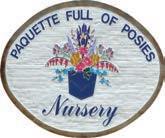

said. She said Simms and Herrington also discussed not telling anybody about the homicide.
Herrington was nabbed two weeks later in Philadelphia.
Herrington received just over 12 years in federal prison, but recently the court agreed to reconsider the sentence in light of a U.S. Supreme Court hearing. No new sentencing date has been announced. Herrington had received 110 months for causing the death of Haines while involved in drug trafficking. He also received a consecutive 40-month sentence for conspiracy to distribute both heroin and crack cocaine in Chittenden County between early 2018 and the day of the fatal shooting.







The Shelburne Memorial Day Ceremony will be held on Monday, May 27, at 11 a.m., at the Shelburne Veterans Monument on Church Street. The guest speaker will be Col. Roger Zeigler, the Deputy Chief of Staff, Operations and Training and Commander of the 124th Regiment (Regional Training Institute) during weekend drills.
He was commissioned through the Kansas Army National Guard Officer’s Candidate School in 1998. His past assignments range from command and staff officer acquisition assignments at various levels of responsibility Joint Force duties.
Ziegler graduated from Kansas State University in 1997 with a bachelor’s degree in park and resource management with a



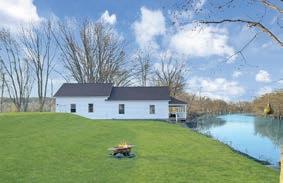







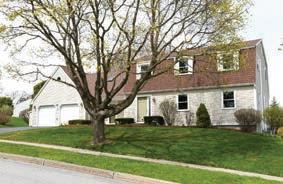

secondary major in natural resources and environmental sciences. He earned a master’s degrees in business administration and in procurement and acquisition management from Webster University in St Louis. He also has a master’s degree in national security and strategic studies and a graduate certificate in leadership and ethics from the Naval War College. His military education includes the Senior Service College and several schools and courses from the Ordnance Maintenance Management Basis Course to the Combined Arms and Services Staff School. Ziegler’s awards include the Meritorious Service Medal. Army Commendation Medal, Army Achievement Medal, Iraq Campaign Medal and the Global War on Terrorism Medal.
Visitors walking Calkins Loop in Burlington’s Intervale will again be treated to a little poetic inspiration along with a dose of fresh air. The Poetry Path features panels displaying bite-sized poems placed at intervals among the trees lining the loop.
“There are other poetry and story walks in our area,” Mary Chaffee, the Burlington-based writer and volunteer coordinating the project, said. “This is the only one I know of where graphically designed panels are framed by branches and leaves. You’re gazing up at the poems as you pass by, and that feels great.”
Now in its third year, the Poetry Path was created by members of the Burlington Writers Workshop. New for 2024, the public is cordially invited to submit a tiny poem, haiku or poetic fragment. Poems should reflect some part of the Intervale Center’s mission: To respect the wild, sustain the land and nourish the people.
The submission deadline is May 30. For submission guidelines go to tinyurl.com/bww-poetrypath-2024.
Few prominent Americans are as associated with a place as Thomas Jefferson is with Virgin-
ia. The heart of Jefferson Country is his house and plantation at Monticello, but Jefferson traveled the breadth of his home state, from his time at William & Mary in Williamsburg to the new state capital at Richmond and his retreat and plantation at Poplar Forest, near Lynchburg.
In the beauty of the Blue Ridge Mountains, Jefferson was inspired to write his only book, “Notes on the State of Virginia.” Laura A. Macaluso presents some of the histories embedded in these places, as she takes a public history tour of Jefferson’s Virginia.
Her talk will be Sunday, May 19, at the Ethan Allen Homestead Museum, 2 p.m. Admission is free, but donations are accepted.
The Richmond Historical Society hosts a summer concert series in the Old Round Church featuring two local bluegrass bands. Forest Station headlines a concert Saturday, June 1, at 7 p.m. Forest Station is a bluegrass group born in the Rocky Mountains and realized in the Greens. They blend high energy, tight pockets and just enough improvisational grease to scratch your itch for real, honest bluegrass. Throughout the years, the group
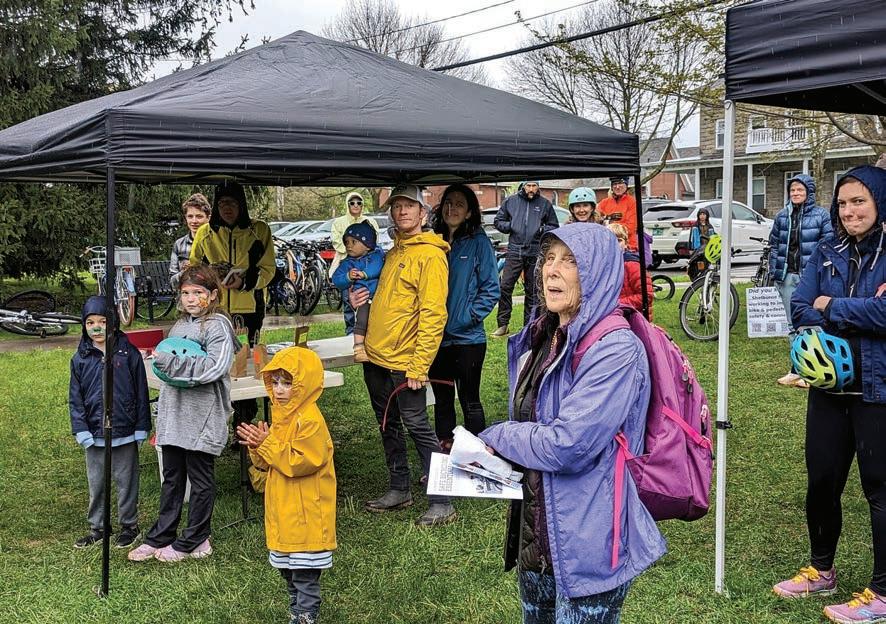


Shelburne Forward Bike and Pedestrian Task Force hosted its first Village Walk & Roll on May 5 — a celebration of walking and riding in Shelburne Village — with the help of its sponsors and raffle prize donors. Despite the rain, attendees enjoyed tunes by musician Charlie Schramm and learned about how to make Shelburne a great place to walk and ride. To learn more about the task force, email Erika Schramm at erikaschramm@ gmail.com.

1 Ride Ready mobile app
2 GMT smart card
3 Contactless payment
Field hockey camp with instructor Megan Maynard-Jacob is the perfect summer introduction to field hockey for beginners or a chance to practice skills for those who already play. Players must provide mouth guard, shin guards and a full water bottle. Sticks are available if needed. The minimum camp size is eight for kids ages 7 to 14.
Registration deadline is June 17, with camp dates on July 8-12 from 8:30-11:30 a.m., at Shelburne Athletic Fields. Cost is $160.
Some camps are already full with a wait list and others have limited spaces left, so don’t wait to reserve your child’s spot in their
favorite camp or new one. Visit shelburnevt.org/160/parks-recreation for online registration and complete details.
Come play and connect with others. No pre-registration necessary, just sign in at the door. A parent or caregiver must always be present.
Scooters, bikes and ride-on toys are not permitted. There will be balls, hoops and tumbling mats. Wear indoor shoes or socks inside the gym. No food is allowed. In case of inclement weather, call 802-985-9551 to check for cancellations.
The last open gym for toddlers and preschoolers is May 26, 9:3011 a.m. at Shelburne town gym. A
$5 suggested donation per family would be appreciated.
Fall youth soccer
Early registration deadline Friday, June 14, for early bird price and uniform guarantee. The Shelburne Recreation Soccer League is for students entering grades one to six in the fall. All teams will be assigned one practice night during the week and will compete in games on Saturdays. Early registration fee is $40. After June 14, the fee is $55. There is a uniform fee of $25; a shirt is required. It’s the same reversible jersey as past years. Order a shirt when registering if your child does not already have one. Uniform orders must be placed by June 14 to guarantee the preferred size.



On May 8, students from schools around the state gathered at Montpelier High School for the Vermont State Geography Bee for kids in the fifth to eighth grade.
After a COVID-related hiatus, the Bee returned so students could flex their knowledge while answering quiz questions centered on state, national and international geography and culture. The format is simple: Sitting in rows of four, students answer individual questions to accumulate points for their teams. The team with the highest point total at the end of 12 rounds of questions is the winner.
At this year’s Geo Bee, Shelburne Community School competed against four other schools: Albert D. Lawton Intermediate School, St. Johnsbury School, U-32 and Williston Central School.
Four seventh-grade students represented Shelburne: Ben Gardner, Jonny Thayer, Josh Kalbfleisch and Leo Wang, coached by Sam Nelson, a seventh and eighth grade social studies teacher at the school.
After the first four rounds, Shelburne had a two-point lead over both Williston and U-32. Four rounds later, however, Shelburne was down two points to all its competitors.
Going into the final set of questions, Gardner had a role in eliciting reactions from the crowd himself. Despite a quiet and focused atmosphere of the competition, he
brought an air of levity to the high school auditorium several times by uttering statements while waiting for his questions, like “let’s do this: and “bring it on.”
At one point audience members were laughing out loud as Gardner answered the question, “Which is the only state in Australia that is also an island?” with “Tasmania, baby!”
Going into the final set, Thayer and Kalbfleisch displayed their geographic knowledge, positivity and sportsmanship. While correctly answering almost all the challenging questions thrown, both competitors offered fist bumps and high fives to their teammates as well as their competitors in the neighboring rows of students.
By the 11th and 12th rounds of questions it was clear that the two schools competing for the win were Shelburne and Williston.
In the final round, Wang came through for Shelburne Community School. Navigating tricky questions centered on the Middle East, he answered the final round question correctly and Shelburne and Williston tied after the final round.
The tie forced a playoff, and teams had five minutes to prepare. All four members of the Shelburne team used the opportunity to review a classroom atlas and cram whatever geographic knowledge they could before moving back to their seats on the stage.

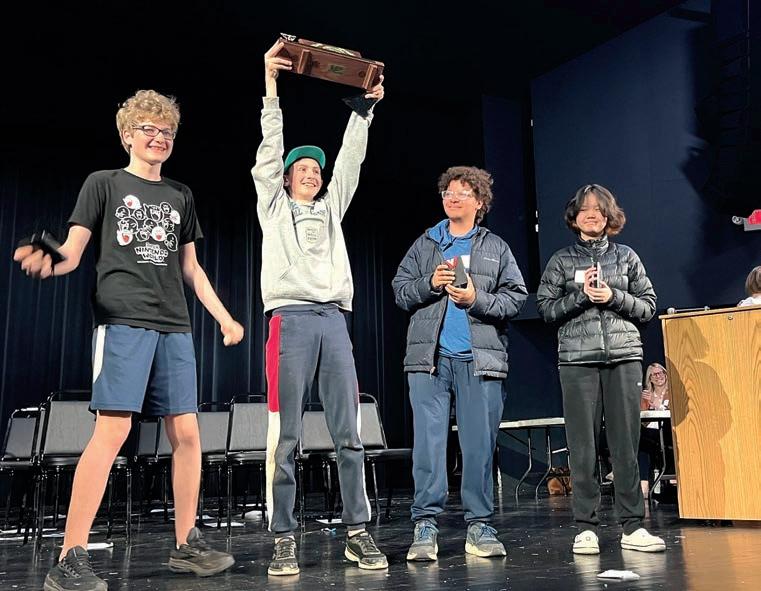
A notable moment came when, before the final round of questions, students from both schools gave each other fist-bumps, handshakes and wished each other good luck.
As the final questions were presented, it once again came down to Wang.
The question? “On which of the following seas does Iran have a border: the Aral
Sea, the Black Sea or the Caspian Sea?” Wang took a moment, inhaled, and said “Caspian Sea.”
Scores were announced, students celebrated, and congratulatory handshakes were shared. The Shelburne Community School team held the state championship trophy high, capping off a triumphant return of the Vermont State Geography Bee.


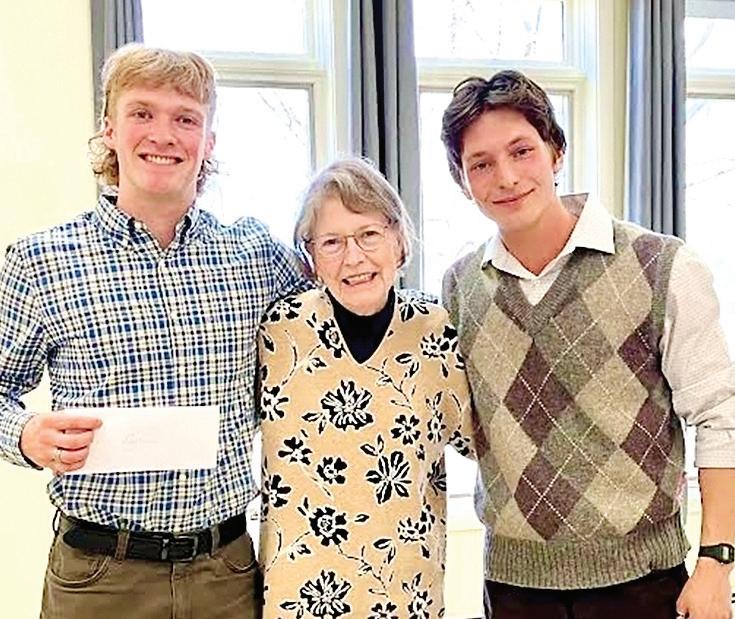
The Burlington Garden Club recently presented two $1,000 awards to two seniors — Jake Darling and Ryland Wilde — studying at the University of Vermont for horticulture. The students were selected by a university review panel with coordination from Dr. Mark Starrett, associate professor in the Plant and Soil Science Department. Margaret Bartholomew, program award coordinator, said, “These awards are cohesive with the Burlington Garden Club mission of stimulating knowledge, appreciation of horticulture and the protection of our national environment.” The awards recognize the student’s academic achievement, school and volunteer work in the community. Darling is studying agroecology and community entrepreneurship and Wilde is majoring in agroecology and landscape design. Pictured, from left, Darling, Bartholomew and Wilde.
continued from page 6
has formed a communicative musical bond that has resulted in innovative string music spanning the traditional ideal and pushing a unique style into unknown territory.
Their debut album, “Earth Tones,” was released in April and is an ode to their Western roots, steeped in the mountain ranges, landscapes and forests that surround them.
On Saturday, Sept. 21, at 7 p.m., the concert series presents Mama Tried, an all-female foot-stomping bluegrass, country folk and blues string band.
Admission to each concert is by suggested donation of $15. The profits will support maintenance of the church or other projects of the Richmond Historical Society.
For more, go to richmondvthistory.org.
The Hinesburg Firefighter’s Association is holding its annual craft fair on Saturday, May 18, 9 a.m.-3 p.m. at the fire station,

10304 Route 116.
There will be more than 45 vendors and concessions. Admission is free. The event benefits the Hinesburg Fire Association.
Shelburne church, Age well host March luncheon
Age Well is offering a luncheon on Wednesday, May 22, in the St Catherine of Siena Parish Hall, 72 Church St. in Shelburne.
The menu is stuffed chicken breast, mashed potatoes, sliced carrots, dinner roll, pumpkin cookie with raisins and milk.
Check-in time is 11:30 a.m. and the meal will be served at noon.
There is a $5 suggested donation. Register with Kerry Batres at 802-662-5283.
The Age Well meal pickup for Thursday, May 23, is from 10 to 11 a.m. at the Charlotte Senior Center. The meal features chicken breast with vegefeatures roast beef with sauce, diced potatoes with parsley, green beans, wheat bread, oatmeal cookie and milk.
You must pre-register by the prior Monday at 802-425-6345 or meals@charlotteseniorcentervt. org.






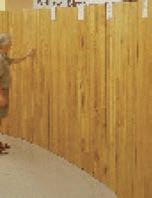




LAUREN READ
CORRESPONDENT
Five years ago, as Ultimate embarked on its first season as a varsity sport, 11 boys signed up to play for Champlain Valley.
The sport has now solidified its hold on the Redhawks with 50 players turning out for tryouts this year and both a varsity and junior varsity team competing this spring.
Champlain Valley has seen a similar rise on the field. In that first year, CVU advanced to the Division I quarterfinals and then made it to the semifinals over the next few seasons.
Last year, the Redhawks lost in the state championship match, the program’s first appearance in the final.
“It’s crazy to see that kind of growth throughout the years,” coach Syrus Amedore said. “The level of competition is always improving, whether it’s getting more people who are competing in other sports coming out or those who have started at the middle school level and are now coming up through that.”
The year the Redhawks are undefeated and looking to win a state championship.
“We’ve seen what we can do, and we’re ready to try to get that get that championship,” Amedore said, noting that this year’s team is an experienced one, with most of the roster made up of junior and seniors.
Kyle Stewart and Danny Goldsmith, both seniors, are cogs in defense and transition games for the Redhawks, while senior DJ Steinman and juniors Charles Garavelli and Jacob Lepple help lead the offense.
“We have a lot of returners who are used to playing in the system that we use,” Amedore said. “Then we’ve picked up a couple of senior athletes who have slotted into some positions that we lost from last year.”
Both returning and new players are attracted to Ultimate, Amedore said, because of the fun factor. The game features seven players on each side whose aim is to get the disc into the end zone through a series of passes down the field. The disc can get turned over when a defensive player jumps in and steals a pass, or the disc is dropped.
The sport leaves a lot of opportunity to players to show off their speed, athleticism and flexibility.
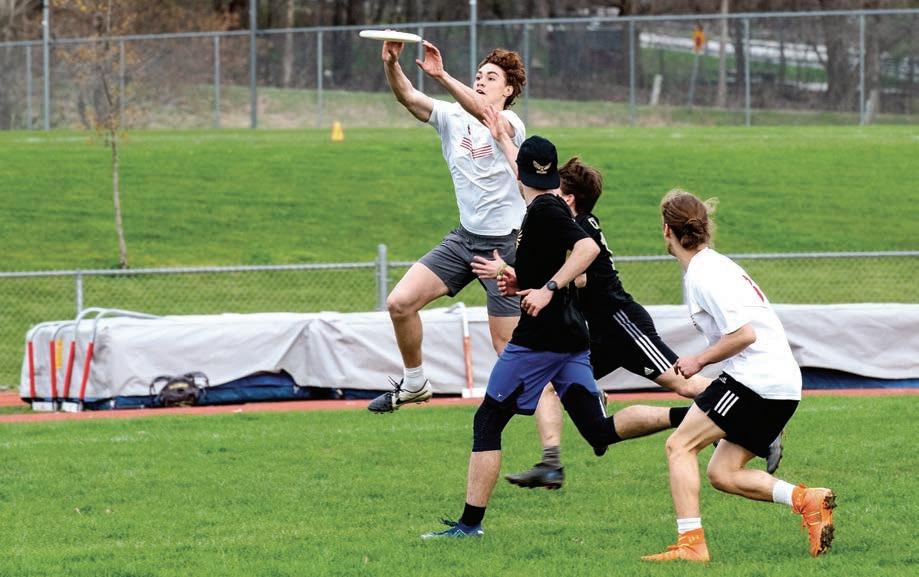
“It’s just a fun sport,” said Amedore, who has been with the program since 2011 when it was just a club spot. “There are exciting moments, whether it’s diving for a disc or jumping as high as you can to try to get it over someone else, making a crazy throw, bending it around the defender. Those are all fun things to do.”
This year’s hot start features a squad that came up through the CVU system. But there are also brand-new players, like senior Colby Morehouse, who decided to give it a try and are athletic enough to take advantage of what the sport has to offer.

“We have players of all types,” Amedore said. “We have a few players who we generally have specifically cover the primary throwers on the other team. Then we have some of our taller players, who are better playing defense in


the air, helping at the back on any deep throws.”
The Redhawks this season have been about defense, where the rosters’ flexibility and depth has helped. CVU is looking to expand its offense as it prepares for the final month of the regular season and the playoffs.
“My goal is always on how we can improve our team the best throughout the year,” Amedore said. “That being said, a championship is definitely now a goal of the team with where we are, how we’ve played, and the other teams that we’ve seen so far.”
Since the 1990s, the Green Mountain Bicycle Club has had cyclists riding around in circles. The club sponsors a series of practice criteriums at Watertower Hill in Colchester. This year, the events are taking place on three Tuesday nights: May 14, June 18 and July 9.
These practice criteriums are a way to practice riding in a group at race speed on a road loop closed to traffic. Practices are different from other races in that cyclists ride for a specified period and are scored based on how many laps they complete. There are two separate races with the faster racers (those
who are ranked Category 1, 2 or 3) racing for 45 minutes starting at 6:45 p.m. while those who have lower ranking or no ranking ride for 35 minutes starting at 6 p.m. The 6 pm race is a great way for novices to try their race legs. The entry fee for the races is $10 per rider with $5 for juniors and full-time college students. No race license is needed to enter. Registration opens at 5:30 p.m. and closes 10 minutes before the start of the race. The races will be cancelled if conditions are unsafe.
For further information contact Andre Sturm andre.sturm@earthlink.net.
The Outside Story
Laurie D. MorrisseyEach spring, cities from New York to Texas celebrate the spectacular blooming of ornamental cherry trees. In many cultures, the lovely, delicate pink and white cherry blossoms symbolize rebirth and renewal, as well as the fleeting nature of life. Beyond these showy cultivated trees, our region boasts three native cherry species, which are important in regeneration of disturbed forests and as a source of food and shelter for a variety of wildlife.
New England’s wild cherry trees share a genus (Prunus) with those cultivated beauties, but their flowers are more modest. Our region’s native cherry species are black cherry, choke cherry and pin cherry (also known as fire cherry). Members of the rose family, cherry trees are relatives of apple, pear and plum, and woodland trees like serviceberry and mountain ash. All three natives share a cherry fragrance and bitter almond taste derived from trace amounts of hydrogen cyanide. If you’re not sure whether you’ve found a cherry tree, break off a twig and give it a sniff or a taste.
and crafters appreciate the wood for its rich, reddish-brown color, hardness, and close grain. For use as lumber, cherry trees need to be straight-grained, disease-free, and without branches for at least 10 feet.
“The poor quality of New England soils lowers the quality of the black cherry timber compared with further south,” Anderson said. “Here it’s often marginal for timber and ends up in the firewood pile, except in the best sites.”
In the Northeast, the black cherry’s drooping spikes of flowers bloom in mid-May or early June, about a week after the leaves emerge.
In the Northeast, the black cherry’s drooping spikes of flowers bloom in mid-May or early June, about a week after the leaves emerge. Even without its white flowers or tapered leaves, it is easy to identify this tree by its bark. The bark of young trees is reddish brown and has horizontal white marks called lenticels. The bark of mature trunks is dark gray and broken into plates that are curved slightly upward at the edges. It is often described as looking like burnt cornflakes.

Black cherry (Prunus serotina) is the largest of the native trio. In the Northeast, specimens grow individually and in small stands, often reaching heights of 50 to 60 feet. Because they are intolerant of shade, cherries often grow along stone walls and hedgerows. “It’s not common in our mature forests except in enriched sites where leaves and soil nutrients accumulate from slopes above,” Dave Anderson, senior director of education for the Society for the Protection of New Hampshire Forests, said of black cherry. He noted that black cherry may also occur in second-growth hardwood forests.
Some of New Hampshire’s oldest black cherry trees are taller than 80 feet, but the most impressive specimens grow in the Allegheny Plateau in Pennsylvania, where the species is prized for its timber value. Furniture makers
Pin and choke cherry are brushy trees that typically are not as long-lived as black cherry and rarely grow more than 30 feet tall. Like black cherry, they thrive in open areas with lots of sun, springing up in old fields and in forest areas that have been disturbed by logging, fire or storms. These two species grow rapidly in such areas, Anderson said, and help to stabilize soil, allowing other tree species to eventually become established.
All three of our region’s native cherry trees have attractive flowers and brilliant fall foliage, but their greatest virtue may be their value to wildlife. Renowned entomologist Doug Tallamy calls Prunus “ecological gold,” and notes that cherry is second only to oak in supporting the terrestrial food web. Cherry trees provide food for mammals and birds, and they host more than 450 species of butterflies and moths, according to Tallamy.
“Unfortunately, many people consider cherry trees weedy because they make so many fruits
that germinate where people don’t want them,” he said. “People often turn their landscapers loose on them, cutting them all out.”
Among the invertebrate species partial to black cherry trees are eastern tent caterpillars and fall webworms, which weave unattractive webs in the branches. In a high tent caterpillar year, a bonus for cuckoos, which are voracious caterpillar eaters, caterpillars can defoliate their host trees. Most trees survive the damage, however, and put out new leaves in the same season.
Given their role in regenerating forests and feeding wildlife, cherry trees are worth their weight in gold: ecological gold.
Laurie D. Morrissey is a writer who lives in Hopkinton, New Hampshire. Illustration by Adelaide Murphy Tyrol. The Outside Story is assigned and edited by Northern Woodlands magazine and sponsored by the Wellborn Ecology Fund of the New Hampshire Charitable Foundation, nhcf.org.
The Town of Charlotte, Vermont (population 3,900) is seeking candidates for the position of Recreation Director.
The Recreation Director is responsible for managing Town of Charlotte sponsored recreational programs, recreation equipment and facilities to meet the needs of various age groups, in accordance with the Sports Program Mission Statement, and for managing the Charlotte Town Beach. The Director plans, implements, administers, coordinates, monitors and evaluates recreation programs for the Town. The Director further works in conjunction with the Recreation Commission in developing and proposing a budget to the Selectboard. The Town’s Recreation Department has budget of $150,000 for fiscal year 2024-25.
The Selectboard is seeking an individual with a collaborative and team-oriented approach; strong organizational skills; the ability to develop and work within a budget; and experience in developing, implementing and managing recreational programs. Candidates should also possess excellent communication, community engagement, organizational, problem-solving and leadership skills. A baccalaureate degree, or equivalent, in recreation or sports management or related fields is preferred. However, candidates with comparable work experience are highly encouraged to apply. A complete job description is available at https://charlottevt.org/jobs.
The salary range for the position is $43,500 - $48,500 DOQ. Working hours and duties will vary seasonally, averaging 30 hours/week. This position is eligible for health, dental and retirement benefits. Background check required. Charlotte is an EOE and values diversity and inclusiveness in the community and workplace. Email applications, including a cover letter and resumé, to townadmin@ townofcharlotte.com by May 31st, 2024. Applications submitted after this deadline may be accepted on a rolling basis. The Selectboard intends the selected candidate to start by July 15th, 2024.
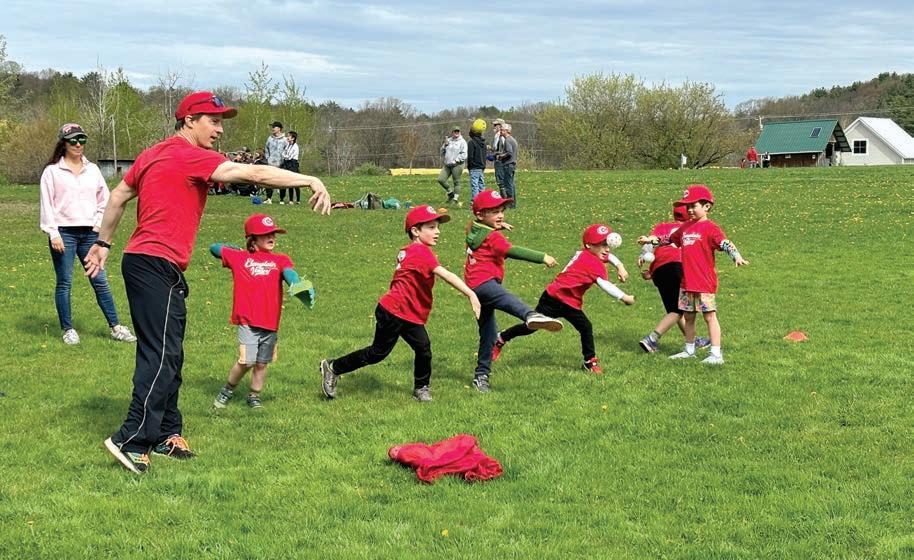
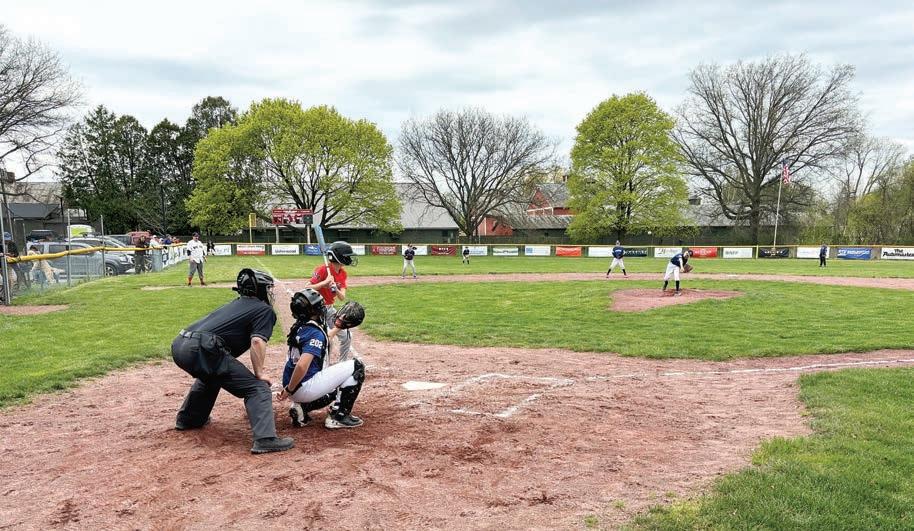





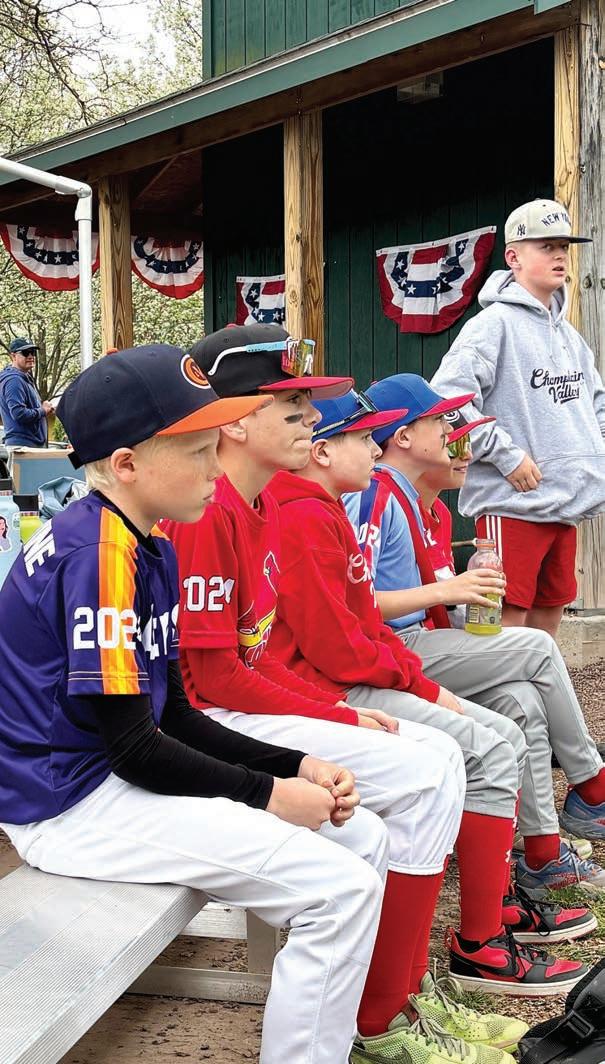
The week of May 20-24, the library has not one, not two, but three book clubs.
The Monday morning book club is reading Kenneth M. Cadow’s “Gather” and holding a discussion on May 20 at 10:30 a.m. Copies are still available at the library.
The Tuesday night book club is reading “Before the Court of Heaven” by Jack Mayer, another local author. They meet at 6 p.m. on May 21. There are no more copies available at the library, but other
local libraries have them.
Finally, on Thursday, May 23, at 6 p.m., join representatives from the Shelburne Museum at the Pierson for a discussion of Ruth Ozeki’s “All Over Creation” as part of the Exhibitionist’s Book Clu, a club that pairs great literature with upcoming gallery exhibits. There are copies available at the front desk.
Do you have any kiddos that love board games? This club might just be the thing for you. On Monday, May 20, join other fourth
through eighth graders and their parents as they play interesting new titles.
Join the Pierson Library on Thursday, May 23, for a handson exploration of accessible artificial intelligence tools that can revolutionize your personal and professional routines. From crafting persuasive emails to curating personalized music playlists and organizing digital photo collections, discover how AI can enhance
productivity and creativity without the need for a math degree. Through real examples and fun activities, they’ll demystify artificial intelligence and show you how
to harness its potential as an everyday creative partner and productivity booster. Appropriate for adults. No advanced registration is necessary.
Notice of Public Hearings to be held June 5, 2024, 7:00 PM Town Center Meeting Room #1 and Remote Meeting via Zoom


SUB24-01: Application by Stern Irrevocable Trust for Sketch Plan approval of a PUD-R 3-lot subdivision. Property at 365 Duck Pond Road is in the Rural District and a portion in the Lakeshore Overlay District.




Hart & Mead Energy and All Star Fuels in Hinesburg/Bristol area is looking for an individual with a clean CDL-B / Hazmat endorsement. Able to pass federally mandated drug screening. DOT physical required. Competitive wage, paid holidays and sick time.
Contact hartmeadllc@gmail.com or 802-482-6666
SUB24-02: Application by Robert and Mendy Mitiguy for Sketch Plan approval to subdivide an existing residential lot into 2 lots. Property at 335 Tamarack Shores is in the Residential District, Stormwater Impaired Watershed Overlay District, and a portion in the Lakeshore Overlay District.
RABIES BAIT
Join Zoom Meeting: https://us02web.zoom.us/j/86499906932?pwd=d1h4cFRFV0lsM2QySDZuaW9pY1NGdz09
Meeting ID: 864 9990 6932 Passcode: 6aYM4L
The week-long bait drop is a cooperative effort between Vermont and the U.S. Department of Agriculture Wildlife Services to stop the spread of the potentially fatal disease.
May 16, 2024
Rabies is a deadly viral disease of the brain that infects mammals. It is most often seen in raccoons, skunks, foxes, and bats, but unvaccinated pets and livestock can also get rabies.The virus is spread through the bite of an infected animal or contact with its
continued from page 2 saliva. ways fatal treatment 100 percent a person So far have tested those have According animals mal behavior, an animal it. People animals
your service here! call 985-3091 for rates

































continued from page 1
the sport allowed him to connect with people from all different backgrounds, in countries where children learn to kick a ball shortly after they learn to walk.
In his experience, he equated a soccer ball to a cultural passport of sorts.
In addition to cultivating a love of soccer, the duo is cultivating a new sense of community where kids are developing surrounded by their own, local communities, a concept that Kim and Sienko agreed is eroding.
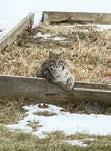


• View a complete online copy of the print edition
• Read the latest news
• Find out about sales and events
• Stay up to date on local happenings VTCNG.com/ShelburneNews/digital_edition
Sign up for our Friday EMAIL NEWSLETTER
Headlines and news sent directly to your inbox every Friday at 10 a.m.
Sign in and add your weekly newsletter: VTCNG.com/users/admin/mailinglist

“All you got to do is show up with a ball and suddenly your friends,” he said, “You might speak the language, you might not speak the language, but you’ll be sitting there drinking coconut water out of coconuts with a bunch of guys. You realize that the soccer ball brings people together, in a way that we’re missing.”
This typical street soccer model is something Kim and Sienko are attempting to replicate in Shelburne. Brazilians use the Portuguese term “pelada” for informal, pick-up soccer, which is the foundation for the sport, and, they argue, it is the best environment to cultivate passion, joy and creativity.
The basis of the pelada sessions is to allow kids, at a crucial time after being in the classroom all day, to play without intense coaching direction.
“The fields are set up already and we don’t coach them on purpose. We let them play just the same way that you played hide and go seek when you were a kid,” Kim said. “Sure, you were trying to win, but you were having a great time expressing yourself doing it. As a result, we’ve seen these kids turn into some really, really clever players, players who love soccer, and who want more.”
“We intend to create a model in which we develop kids here, we want good coaching to happen here, and we also want to help build community because there are fewer and fewer remaining sources of community,” Kim said.
But community doesn’t just mean those that can pay for it, said Kim. To make the sport accessible to everyone who calls Shelburne and surrounding areas home, the men have offered a sliding pay scale for kids to participate in pelada.
To remove additional barriers, the duo offers school pick-up and transportation to the athletic fields after classes.
“We want everyone to come and play,” Kim said. “You can see that our Shelburne teams have Venezuelans, South Sudanese, local Vermont kids, kids who barely speak English or who don’t speak English at all. And they’re all playing together, and soccer is really the only sport that really does that.”
Soccer Roots also has its own competitive teams under Soccer Roots Club du Futbol.
Kim said that when he was working with Sienko, his assistant coach at Middlebury for a season, a light bulb went off for them both during their routine drives to and from the college campus.
At the college level, a lot of Kim’s work goes into recruiting, which is where he began to realize that a lot of college students coming from top soccer communities in the country were still lacking basic soccer skills that he has seen kids around the world master very early on.
“I was sitting there thinking, ‘I can’t believe that you’re 18, 19, 20 years old, there’s all these things that you can’t do, things that you don’t know how to do,” he said. “I took a deep dive into development around the world to pick out the differences between what we do and what’s done elsewhere.”
Parent Erika Monaghan, who also teaches English at Shelburne Community School, shared that her son, Charlie, has benefitted firsthand from the coaching styles and direction of both Kim and Sienko.
“What Soccer Roots has done for our kids is that it’s enabled them to play and to feel a sense of belonging outside of school,” she said. “It is hard for these guys to do anything in Shelburne after school, you have to pay a lot of money, you have to transfer, you have to drive there. They just want kids to play the game that they love.”
Kim and Sienko have gotten support in the business community but are hoping to obtain nonprofit status to help raise more funds to keep the program going. The team has also raised more than $1,200 through a GoFundMe fundraiser (bit.ly/3UYCJ49).